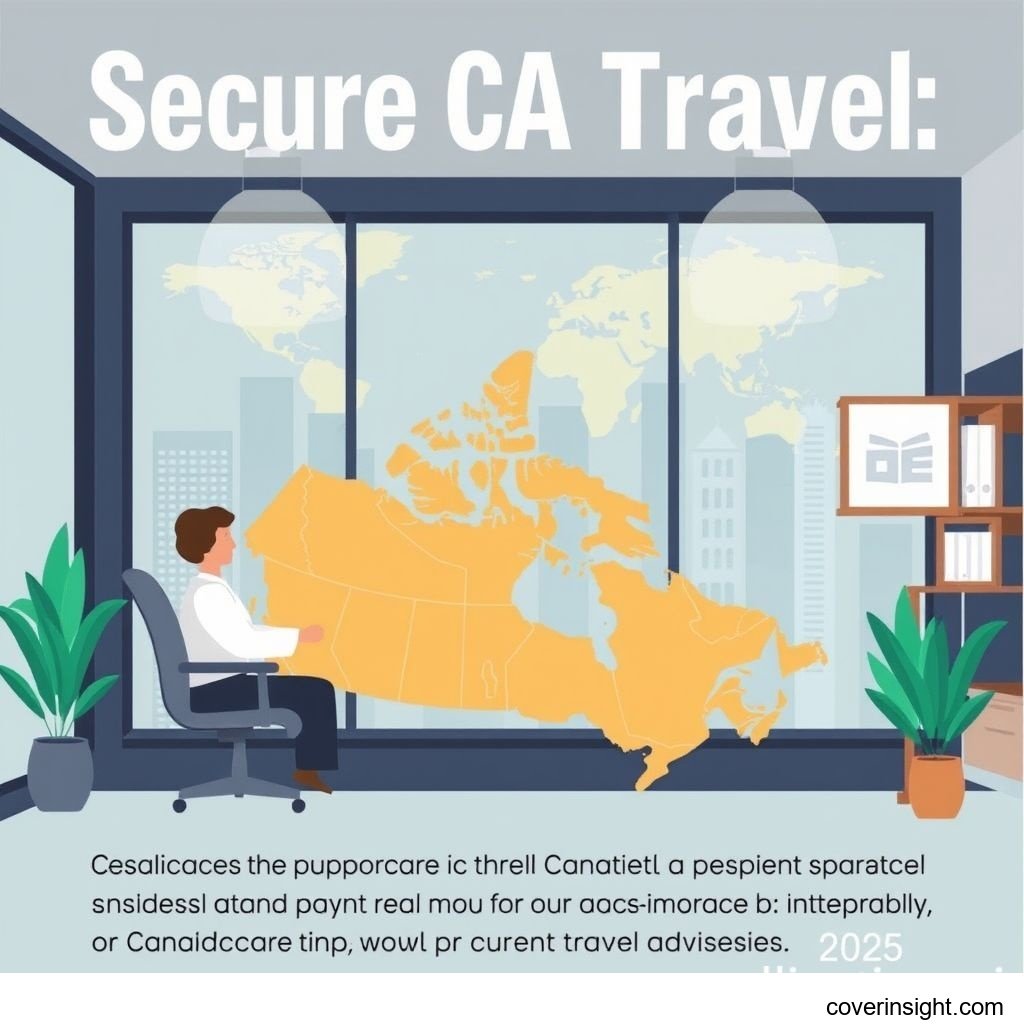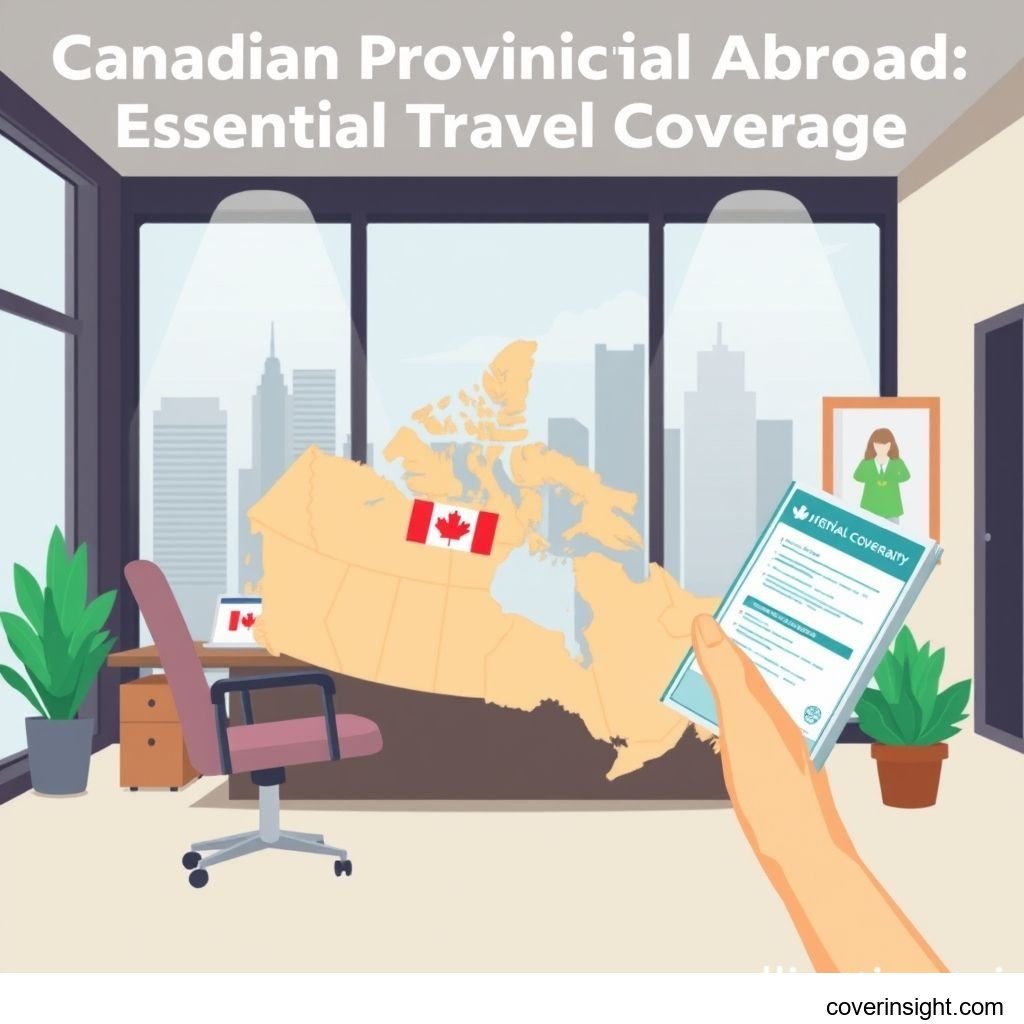Introduction
As Canadians look forward to international adventures in 2025, understanding the nuances of health coverage abroad is paramount. While our provincial health plans are a source of pride, it’s a common misconception that they provide comprehensive protection once you cross the border. In reality, provincial health coverage offers very limited, if any, financial support for medical emergencies incurred outside Canada. For instance, a serious accident or sudden illness can lead to staggering hospital bills, often tens or hundreds of thousands of dollars, leaving travellers in a serious bind. This stark reality underscores the critical importance of securing robust travel insurance before embarking on any international trip, ensuring peace of mind and financial security.
Coverage Details
What’s Included
A comprehensive travel insurance policy typically covers a wide array of unforeseen events and expenses. Foremost among these is emergency medical coverage, which pays for doctor visits, hospital stays, prescription medications, emergency surgeries, and even medical repatriation back to Canada if necessary. Beyond medical emergencies, many policies include trip cancellation and interruption benefits, safeguarding your investment if your trip is called off due to an unforeseen event like illness, a family emergency, or even a natural disaster. You’ll also find coverage for lost or delayed baggage, ensuring you're compensated for essential items if your luggage goes missing or is significantly delayed. Some plans offer accidental death and dismemberment benefits, and increasingly, COVID-19 related expenses are standard inclusions, though specifics can vary widely between providers. For a deeper dive into what's generally available, you might consult Insurance Resources Global.
Common Exclusions
Even the best policies have their limits. Understanding common exclusions is crucial to avoid unpleasant surprises. Pre-existing medical conditions that are not stable or declared, for example, are frequently excluded. Policies often have specific clauses regarding high-risk activities like heli-skiing or bungee jumping, which may require additional riders. Travel to regions under government travel advisories, or incidents related to alcohol or drug abuse, are almost universally excluded. Acts of war, civil unrest, and sometimes even pandemics (though this is changing post-COVID) can also fall under exclusions. Always read the fine print—that’s where the devils often hide. For more detailed information, the Insurance Bureau of Canada offers excellent consumer guides.
Cost Analysis
Price Factors
The cost of travel insurance isn’t a one-size-fits-all figure; it’s influenced by several key factors. Your age is arguably the biggest determinant, with premiums typically increasing significantly for older travellers due to higher associated health risks. The length of your trip also plays a major role; a weekend getaway will naturally cost less to insure than a month-long excursion. Your destination matters too, as medical costs vary globally (e.g., healthcare in the U.S. is notoriously expensive, driving up premiums for trips there). Finally, the type and level of coverage you choose, including the deductible and maximum payout limits, will directly impact the price. For instance, opting for higher medical coverage limits or adding adventurous activity riders will increase your premium.
Saving Tips
While essential, travel insurance doesn't have to break the bank. Consider purchasing an annual multi-trip policy if you travel frequently; it’s often more economical than buying single-trip policies for each journey. Being proactive and buying your insurance as soon as you book your trip can sometimes secure better rates, and ensures you’re covered for trip cancellation benefits from that moment. Review your existing insurance policies, such as credit card travel benefits or group benefits through your employer, as they might offer some baseline coverage that could reduce the need for certain add-ons. Lastly, comparing quotes from multiple providers is crucial. Don’t just go with the first offer; shop around to find the best value for your needs.
FAQs
-
How much does provincial health coverage abroad cost?
Provincial health coverage itself is part of your taxes and doesn't have an additional "cost" for being abroad. However, it covers only a fraction of emergency medical costs. For instance, a recent report by a credible Canadian health agency indicated that while a hospital stay in Canada might cost $1,000 per day, the same stay in the U.S. could easily exceed $10,000, with your provincial plan possibly reimbursing a paltry $100-$400 of that daily cost. The actual gap is enormous.
-
What affects premiums?
As discussed, age, trip duration, destination, pre-existing medical conditions, and the specific level of coverage chosen are the primary factors.
-
Is it mandatory?
While it's not legally mandatory for Canadians to buy travel insurance for most destinations (unlike, say, Schengen visa requirements for visitors to Europe), it is highly, highly recommended. Think of it like this: you wouldn't drive a car without insurance, would you? The potential financial fallout from a medical emergency abroad without coverage can be financially devastating.
-
How to choose?
Start by assessing your personal health situation and trip specifics. Then, compare policies from reputable providers, paying close attention to medical coverage limits, exclusions, and customer service reviews. Consider your comfort level with deductibles and ensure the policy covers any planned activities. For more guidance, check out CA Insurance Home.
-
Consequences of no coverage?
The consequences can be dire. Without coverage, you are personally responsible for all medical bills, which can easily run into the hundreds of thousands of dollars. This could mean depleting your savings, going into significant debt, or even having family members mortgage their homes to cover your expenses. There have been many unfortunate cases, like a British Columbian who suffered a heart attack in Hawaii and faced over $500,000 in bills, a true wake-up call for many. The Financial Consumer Agency also provides excellent resources on understanding these risks.
Author Insight & Experience:
Based on my experience as someone living in CA who has seen firsthand the stories of travellers caught off guard, navigating the world of travel insurance can feel like pulling teeth. It's not the most exciting part of trip planning, but it's arguably the most critical. I once had a friend who, despite my nagging, decided to "wing it" on a short trip to Mexico. He ended up with a nasty case of food poisoning that landed him in a private clinic for a night. The bill, for what seemed like a minor ailment to him, was over $3,000 CAD – a cost that felt like a punch to the gut without insurance. It’s a classic "penny wise, pound foolish" situation, and it really drives home that getting insured isn't just a suggestion; it's practically a travel commandment for 2025 and beyond. Don't risk your nest egg over a few hundred dollars in premiums.








Comments